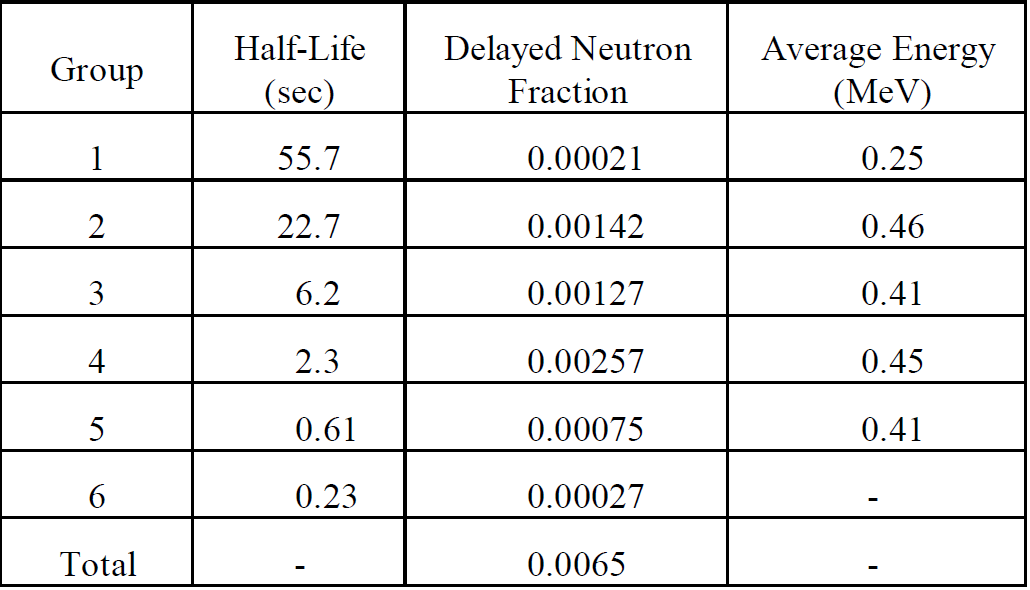
Neutron Classification
 المؤلف:
U.S. Department of Commerce, National Technical Information Service, 1993
المؤلف:
U.S. Department of Commerce, National Technical Information Service, 1993
 المصدر:
The Nuclear Physics and Reactor Theory Handbook
المصدر:
The Nuclear Physics and Reactor Theory Handbook
 الجزء والصفحة:
p 29
الجزء والصفحة:
p 29
 11-4-2017
11-4-2017
 2633
2633
Neutron Classification
The great majority (over 99%) of the neutrons produced in fission are released within about 10-13 seconds of the actual fission event. These are called prompt neutrons. A small portion of fission neutrons are delayed neutrons, which are produced for some time after the fission process has taken place. The delayed neutrons are emitted immediately following the first beta decay of a fission fragment known as a delayed neutron precursor. An example of a delayed neutron precursor is bromine-87, shown below.

For most applications, it is convenient to combine the known precursors into groups with appropriately averaged properties. These groups vary somewhat depending on the fissile material in use. Table 1 lists the characteristics for the six precursor groups resulting from thermal fission of uranium-235. The fraction of all neutrons that are produced by each of these precursors is called the delayed neutron fraction for that precursor. The total fraction of all neutrons born as delayed neutrons is called the delayed neutron fraction (β). The fraction of delayed neutrons produced varies depending on the predominant fissile nuclide in use. The delayed neutron fractions (β) for the fissile nuclides of most interest are as follows: uranium-233 (0.0026), uranium-235 (0.0065), uranium-238 (0.0148), and plutonium-239 (0.0021).
TABLE 1: Delayed Neutron Precursor Groups for Thermal Fission in Uranium-235

 الاكثر قراءة في مواضيع عامة في الفيزياء النووية
الاكثر قراءة في مواضيع عامة في الفيزياء النووية
 اخر الاخبار
اخر الاخبار
اخبار العتبة العباسية المقدسة


